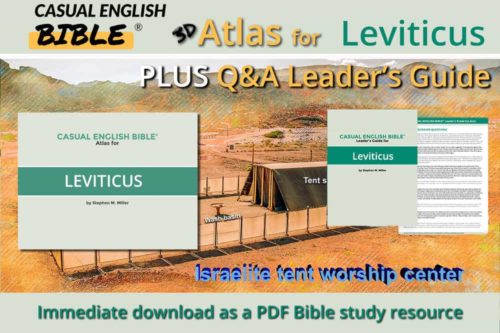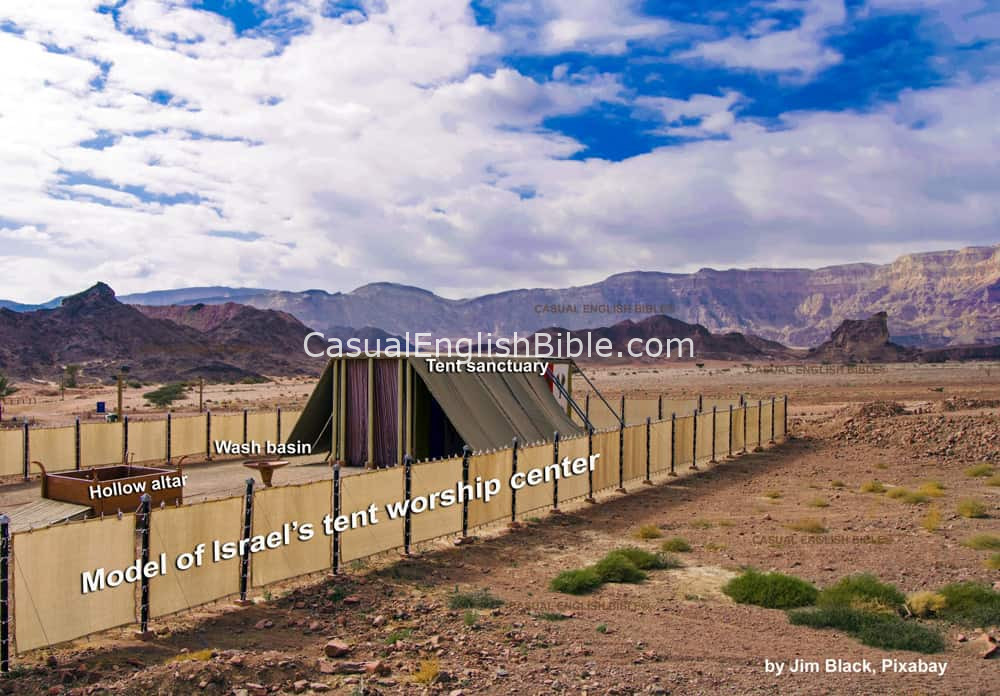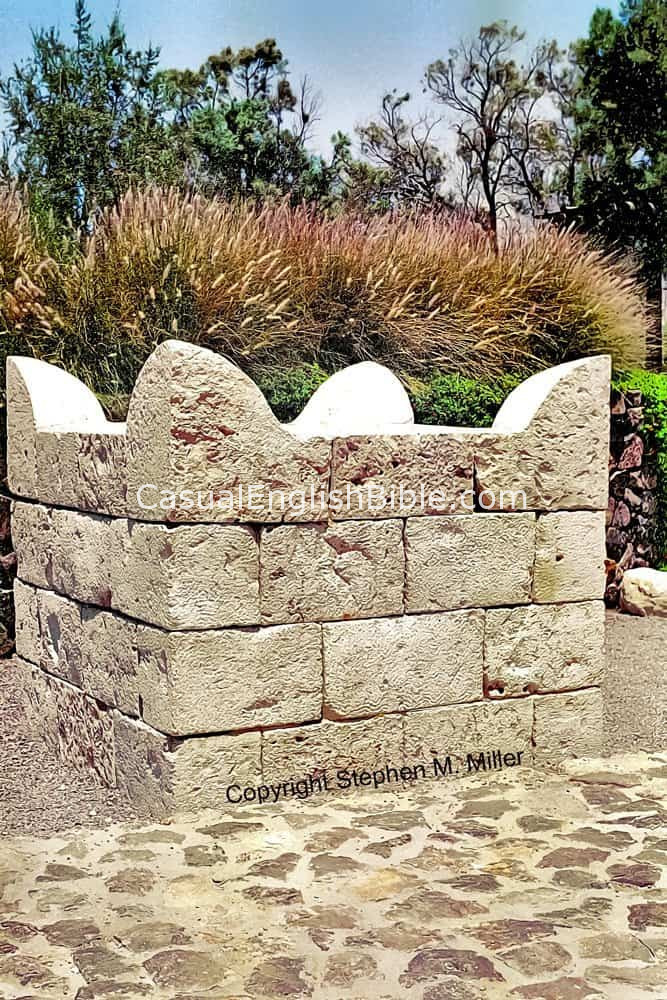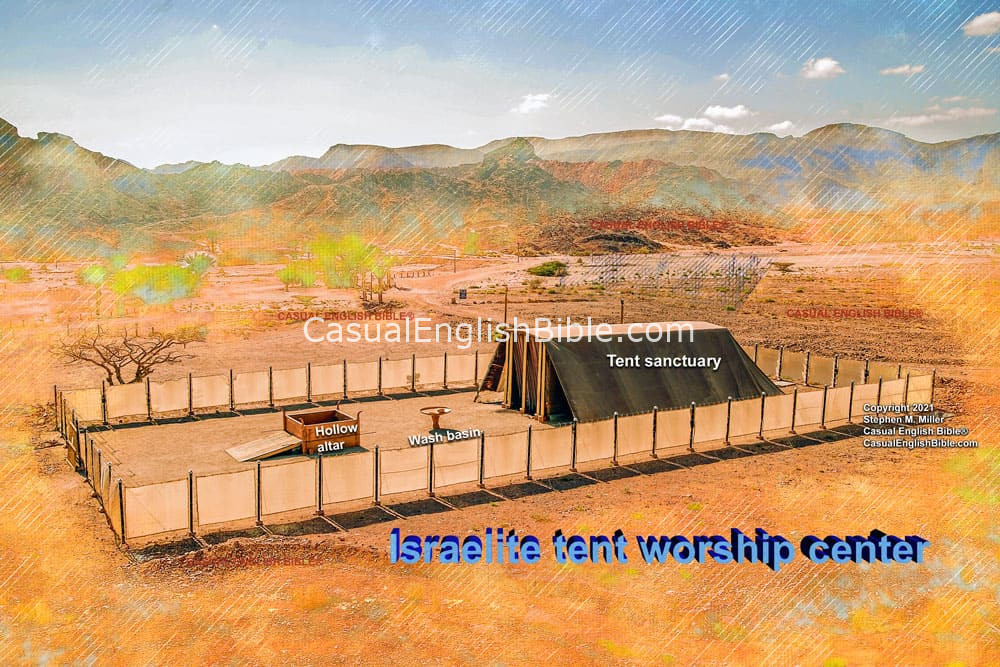Leviticus 4
How to sacrifice for a sin offering
When a priest sins
1The LORD told Moses: 2Tell this to the people of Israel: Here’s what you need to do if you accidentally [1] break one of the LORD’s laws. 3If you’re the high priest and you break the law, you infect all the people with your guilt. To remove this guilt, you need to sacrifice a healthy bull to the LORD—a bull that has nothing wrong with it.4Bring the bull near the entrance of the Meeting Tent. Rest a hand on the bull’s head. Then kill the bull in that sacred place of the LORD. 5Take some of the blood inside the Meeting Tent. 6Dip a finger into the blood and flick it seven times in front of the curtain that covers the entrance into the Most Sacred Room. [2] 7Dab some blood onto the four horns of the altar of incense, there in the LORD’s presence inside the Meeting Tent. Pour the rest of the blood around the base of the sacrificial altar just outside the Meeting Tent.
8Remove the bull’s fat. Take it from the intestines, inside and out. 9Remove both kidneys [3] and the fat on them. Also take out the long lobe of the liver. [4] 10Handle this sacrifice like you would a peace offering, and burn all of this on the altar. 11But don’t burn the bull’s hide, legs, intestines, and waste. 12Burn these parts—in other words, the rest of the bull—outside the camp, in a ritually clean place—on the ash heap. [5]
When the nation sins
13If the nation accidentally breaks one of the LORD’s laws and the people don’t realize it until later, 14they need to deal with their sin once they discover what they’ve done. The community needs to sacrifice a bull as sin offering. [6] They should bring the bull near the entrance of the Meeting Tent.15Community leaders should rest their hands on the bull’s head, and then kill it there as a sacrifice to the LORD. 16The priest will collect some of the blood and take it into the Meeting Tent. 17He’ll dip a finger into the blood and flick it seven times in front of the curtain entrance to the Most Sacred Room.
18Then he’ll also dab some blood onto the four horns of the altar of incense, there in the LORD’s presence inside the Meeting Tent. The priest will pour the rest of the blood around the base of the sacrificial altar just outside the Meeting Tent, near the entrance. 19The priest will cut off all the bull’s fat and burn it on the altar as an offering that goes up in smoke. 20He should do to the bull exactly what is done when a priest sins. This is how the priest will atone for the nation’s sins and keep the people on good terms with God. 21Take whatever is left of the bull outside the camp and burn it, just as you do in a sacrifice when a priest sins. This is the sin offering for the community.
When a leader sins
22When a community leader accidentally breaks one of the LORD’s laws, he’s guilty even though he doesn’t realize it.23If he later discovers what he did was wrong, he needs to sacrifice a healthy male goat. 24He should take the goat to the place where people kill animals in burnt offerings [7] to atone for sin. The animal shouldn’t have anything wrong with it. This is a sin offering—serious business.
25The priest needs to collect some of the animal’s blood. Then, he should use a finger to dab some of it onto the four horns at the top corners of the sacrificial altar. He should pour the rest of the blood around the base of the altar. 26Next, he should burn all the bull’s fat on the altar. This offering goes up in smoke, just as it does in a peace offering. This is how the priest will atone for the leader’s sins and keep that person on good terms with God.
When anyone else sins
27When others who aren’t leaders accidentally sin, they’re guilty even though they don’t know it. 28When they realize what they did wrong, each person needs to sacrifice a healthy female goat to atone for their sins. There should be nothing wrong with the animals.29They take the animals to the place where sacrificial animals are killed. They rest their hands on the goat heads and then kill the animals. 30The priest will dip his finger into the blood and dab some onto the four horns at the top corners of the sacrificial altar. He’ll pour the rest of the blood around the base of the altar. 31Then he’ll cut off all of the goat’s fat, just as he does in a peace offering. He’ll burn the fat as an offering that goes up in smoke. It’s a sweet smell to the LORD. That’s how the priest will atone for someone’s sin, and get that person back on track with God. That’s how the person finds forgiveness.
32If one of the people brings a lamb for this sin offering, that person should bring a female that has nothing wrong with it. 33The person needs to take the animal to the place where sacrificial animals are killed. That person places a hand on the lamb’s head and then kills the animal in a burnt offering.
34The priest will dip his finger into the blood and dab some onto the four horns at the top corners of the sacrificial altar. He’ll pour the rest of the blood around the base of the altar. 35Then he’ll cut off all of the fat, just as he does in a peace offering. He’ll burn the fat as an offering to the LORD that goes up in smoke. That’s how the priest will atone for someone’s sin and get that person back on track with God. And that’s how the person finds forgiveness.
Footnotes
This begs for a question: What if a person sins on purpose? There’s a different to-do list for that. It might begin with making restitution, and with paying extra. There’s also an animal sacrifice for what was often called a guilt offering. See Leviticus 6.
This holiest place on earth to Israelite ancestors of the Jewish people is where they kept the gold-plated box that held the two stones containing the Ten Commandments. The box is best known as the Ark of the Covenant. A curtain separated this room from the main room in the tent worship center sometimes known as the Tabernacle and sometimes as the Meeting Tent. The Sacred Room was the main sanctuary inside the tent worship center. Aaron’s sons were allowed to go in this room. But the Most Sacred Room was off limits to everyone but Aaron and Moses. That’s where God met with Moses to give him instructions.
People in Bible times considered kidneys and liver favorite meat, delicious. They also associated these organs with emotions such as joy and grief. Today, people talk figuratively about emotions coming from the heart, instead. Priests in some ancient religions read omens on livers. A king might order an animal sacrificed before going into battle. Then he would have his priests look at the animal’s liver to see if there was any sign he would win the fight. Ancient clay models of livers were marked with peg holes to show where to look for signs and how to interpret them.
Literally, “finger of the liver.” It’s usually identified as the caudate lobe. There are three other lobes: right, left, and quadrate.
This was possibly the ash heap where the ashes of all sacrificed animals were deposited. See Leviticus 1:16.
A sin offering here refers to something the people of Israel brought to God after they realized they had accidentally broken one of God’s laws earlier. Some scholars say a better translation is the opposite of “sin” because the sacrifice is intended to “un-sin” people, to purify them. So those scholars call it a “purification offering.”
This was the most common animal sacrifice. Worshipers burned the entire animal.
Discussion Questions
- 1
BY ROBERT V. HUBER
Chapter 4 of Leviticus deals with sins that are committed accidentally or mistakenly either through ignorance or thoughtlessness. While today we may question the sinfulness of unintentional wrongdoing, the Israelites provided for sacrifices to wipe away the guilt resulting from such acts. Today, we might simply say “Oops,” and move on. Why might they have thought such offerings necessary?
- 2
Leviticus boldly states that when a high priest breaks the law, he infects all the people. So, to remove the guilt of this sin, he must sacrifice a healthy bull. How do you think a high priest’s sin could extend beyond himself, and infect the people of Israel?
- 3
In a departure from the rites for sacrifices by lower-echelon Israelites, the high priest’s ritual changes a bit. Instead of splashing the animal’s blood against the outside altar, the high priest himself takes blood from the slaughtered animal inside the sanctuary tent. Then he dips his finger into the blood and flicks it seven times in front of the curtain that hangs in front of the Most Sacred Room of the tent. Why the difference? What do you think all of this means?
- 4
Instead of reserving some of the animal’s flesh for eating, the high priest would send the meaty legs of the slaughtered bull to be burned with the garbage. Why waste that good meat? Any guesses?
- 5
LIFE APPLICATION. Most of us have done something in our lives without realizing that what we were doing might result in harm to others. Without revealing any deep, dark secrets, is there any act you would be willing to share in which you inadvertently got something wrong, and hurt yourself or others? If so, how did you resolve the situation?
- 6
LIFE APPLICATION. The sins of the high priest affected all the Israelites. What about the sins of our own religious leaders? The news has been filled with cases of sexual abuse to children and young adults committed by pastors, ministers, priests, and teachers. How much do these leaders’ sins reflect on their flocks or students and what do you think kids, parents, and churchgoers should do when faced with such a situation?









